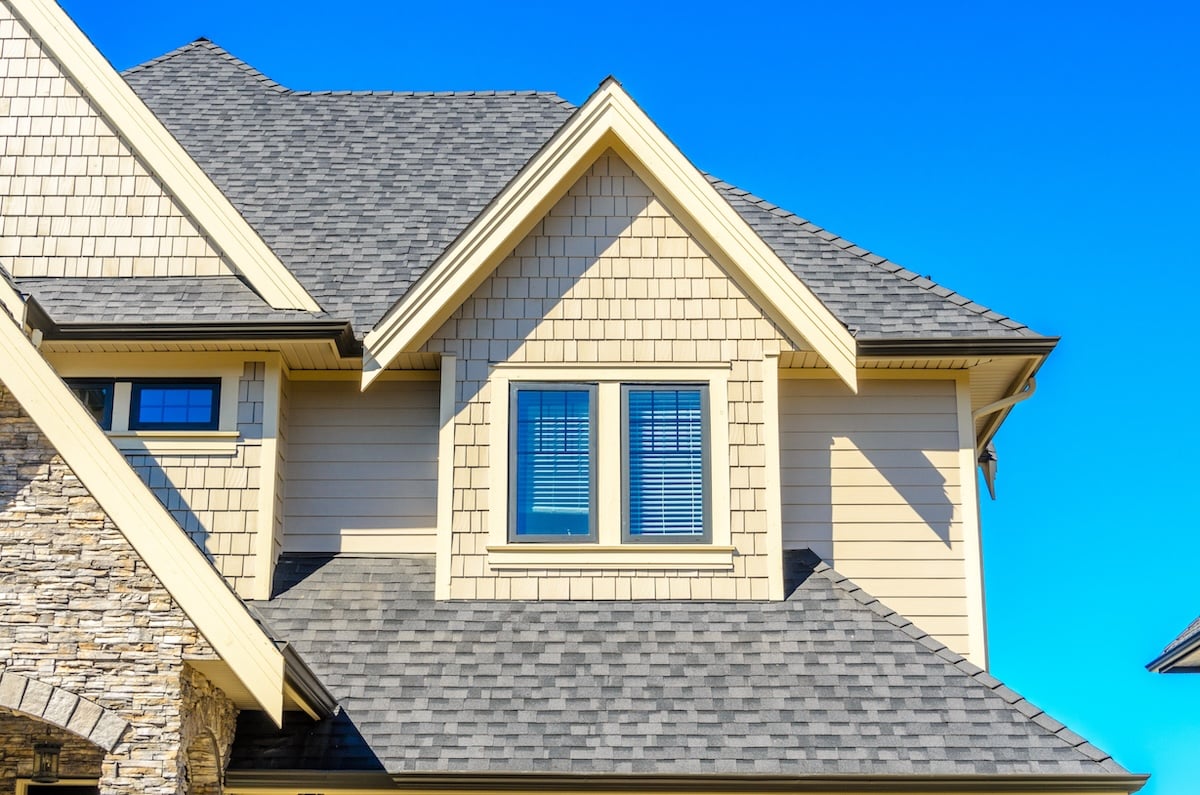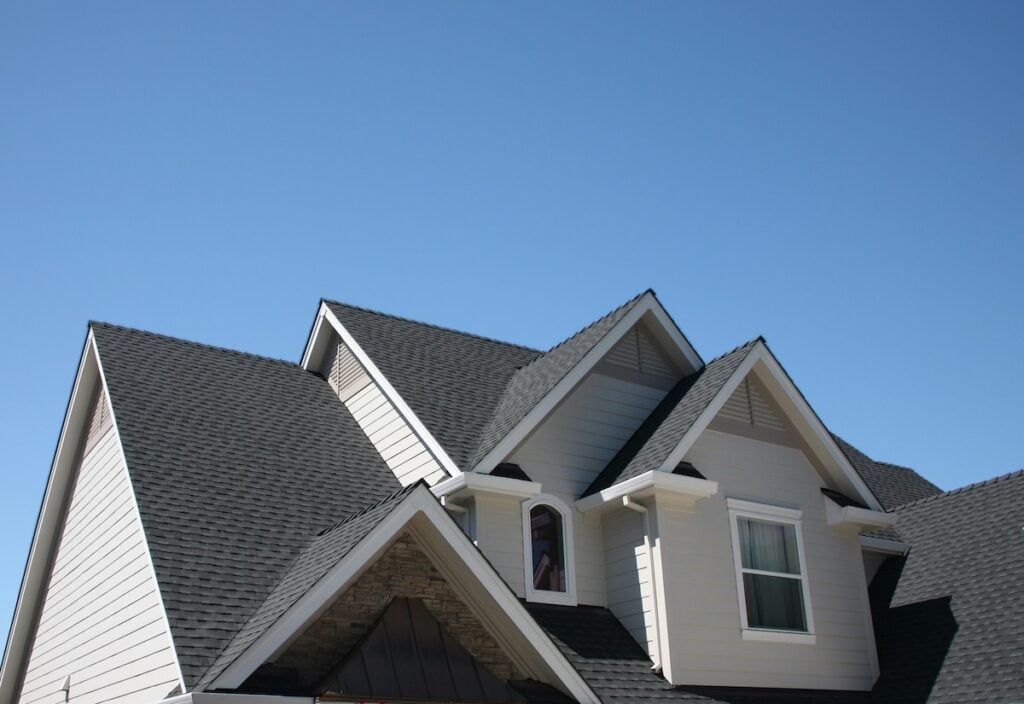

Parts of a Roof: A Simple Breakdown for Homeowners
Posted July 1st, 2025 | 7 min. Read
Your roof is one of the most essential parts of your home. Not only does it protect your family and belongings from the elements, but it also impacts your home’s overall energy efficiency, appearance, and value. Understanding the parts of a roof can help you make informed decisions about maintenance, repairs, or replacements.
This guide covers:
- Why knowing the parts of a roof is important
- Basic parts of a roof are explained clearly, so you’re never left scratching your head during consultations
- How proper roof maintenance can save you money in the long run
🤔 Why Knowing the Parts of a Roof Is Important

Understanding the basic parts of a roof isn’t just for roofing professionals—it’s valuable knowledge for every homeowner. By familiarizing yourself with your roof’s components, you can better communicate with contractors, evaluate the condition of your roof, and make well-informed decisions about repairs or renovations. Knowing the terminology and purpose of each part gives you the confidence to address potential issues before they worsen, saving you time and money.
Here’s why having this knowledge matters:
- Improved Communication with Professionals – Accurately describe issues or concerns during consultations.
- Early Problem Detection – Spot warning signs of damage before they escalate.
- Enhanced Maintenance Decisions – Understand what needs immediate attention for a roof replacement versus what can wait.
- Cost Savings – Avoid unnecessary repairs by addressing root issues.
- Better Renovation Planning – Choose upgrades or materials that suit your roof’s specific structure and needs.
🔎 7 Basic Parts of a Roof

Your roof is made up of several key components, each playing an essential role. Let’s break them down step by step.
1. Roof Structure
The roof structure forms the foundation of any roofing system, providing the critical support needed to hold everything in place. Typically constructed from wood or metal, this framework ensures stability and strength. It includes several key components. Rafters are sloped beams that run from the ridge at the peak of the roof down to the eaves, supporting the roof deck and transferring weight efficiently. Trusses are another vital part of the structure, consisting of pre-fabricated triangular frameworks designed to maximize the roof’s strength while minimizing the amount of material needed. Additionally, joists are horizontal beams that help support the ceiling below, ensuring the roof’s weight is evenly distributed and the structure remains secure.
2. Roof Decking
Roof decking, also known as sheathing, is the layer that provides a stable base for roofing materials to be applied. It is typically made of plywood or oriented strand board (OSB), materials chosen for their strength and affordability. The decking lies directly on top of the roof structure and acts as a flat, solid surface for shingles, tiles, or other roofing materials to be installed. It plays a vital role in maintaining the roof’s integrity, supporting both the underlayment and the outer materials, while also holding up under the stresses of weather and environmental conditions.
3. Underlayment
The underlayment is a critical component of the roofing system, placed directly over the decking as an additional layer of protection. This layer acts as a barrier against moisture, ensuring that water does not penetrate the decking and cause damage. Typically made of felt paper or more advanced synthetic materials, the underlayment shields your home from rain, snow, and wind-driven moisture. It provides a safety net during harsh weather, preventing leaks and structural issues, and is a vital part of the system’s overall durability.
4. Roofing Materials
The outermost layer of the roofing system is made up of the roofing materials, which serve both functional and aesthetic purposes. This layer determines your roof’s durability, weather resistance, and overall appearance. Common options include asphalt shingles, which are affordable, versatile, and widely used for their ability to suit various styles. Tile roofing, often made from clay or slate, is long-lasting, weather-resistant, and adds a stylish, timeless look to any home. Metal roofing is another popular choice, known for being lightweight, highly durable, and effective in extreme weather conditions. The choice of roofing material significantly impacts the roof’s lifespan and the overall style of the house.
5. Flashing
Flashing is an essential component of the roofing system, consisting of thin pieces of metal that are carefully installed in areas prone to leaks, such as roof joints, chimneys, vents, and skylights. Flashing directs water away from these vulnerable points, ensuring that it flows toward the gutters instead of seeping into the structure. This prevents water damage, leaks, and long-term structural issues. By sealing and reinforcing the roof’s most susceptible areas, flashing plays a crucial role in maintaining the integrity of the roof and preserving the home’s interior from moisture-related damage.
6. Ridge and Hip
The ridge and hip are key structural and aesthetic elements of a roof. The ridge is the horizontal line at the very top of the roof where two sloping sides meet, forming the highest point. It serves as a structural connection that enhances the roof’s stability while also providing a clean, finished look. Hips, on the other hand, are found where two roof facets meet at an external angle, creating additional ridge lines along the roof’s surface. These elements not only add to the architectural style of the roof but also play a functional role in ensuring water flows off the roof efficiently and does not collect in unwanted areas.
7. Gutters and Downspouts
Gutters and downspouts are essential components of the roofing system, designed to manage water runoff and protect the home from water damage. Gutters are channels installed along the edges of the roof to collect rainwater as it flows down the surface. From there, downspouts carry the water away from the foundation of the house, preventing pooling and erosion that can compromise the structural stability of the home. By directing water safely away like a drip edge, gutters and downspouts help protect the foundation, siding, and landscaping, ensuring the longevity of both the roof and the home itself.
🛠️ Maintenance Actions That Extend Roof Life

Keeping your roof in good condition doesn’t have to be complicated. These simple actions can save you hundreds, if not thousands, in repair costs:
1. Keep it Clean
Keeping your roof clean is essential for its longevity and overall performance. Regularly remove leaves and debris, especially from your gutters, as clogged gutters can lead to water buildup and damage. Additionally, take steps to prevent moss and algae from growing by using specialized cleaning solutions designed to protect your roof. A clean roof not only looks better but also functions more effectively, ensuring proper water drainage and reducing the risk of long-term damage.
2. Inspect After Harsh Weather
After harsh weather conditions like storms, high winds, or heavy rain, it’s important to thoroughly inspect your roof for any signs of damage. Check for missing shingles, visible cracks, loose flashing, or leaks that could compromise the structure and integrity of your roof. Even if you don’t spot any obvious problems, scheduling an annual inspection is a smart move. This proactive measure allows professionals to catch potential issues early and prevent costly repairs down the line.
3. Address Damage Quickly
If you notice water stains on your ceiling, missing shingles, or any other signs of roof damage, it’s crucial to address these issues as soon as possible. Small problems can escalate quickly, leading to more extensive damage and higher repair costs. Delaying repairs can also result in more serious consequences, such as mold growth or structural damage to your home. Acting fast ensures your roof stays in good condition and protects your home from further harm.
🏠 The Parts of a Roof
Understanding the parts of your roof is key to keeping your home protected, but when it comes to repairs, maintenance, or replacements, you need a team you can trust. At Certified Roofing Solutions, we combine over a decade of experience with top-quality materials and personalized service to ensure your roof is ready for anything.
Whether you need an expert inspection, tailored solutions, or emergency support, we’re here to help every step of the way. Contact us today to schedule your free consultation and see why so many Florida homeowners trust us with their roofing needs!

